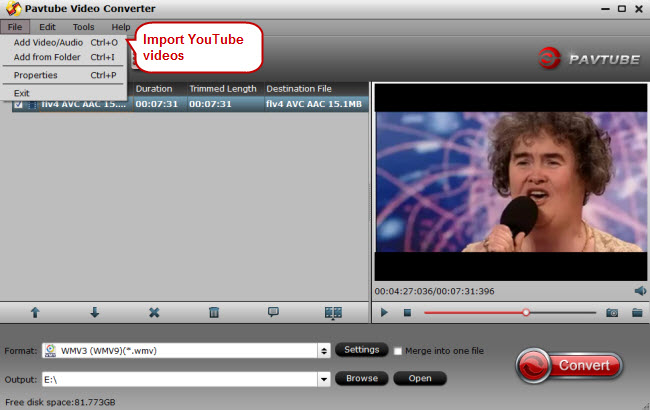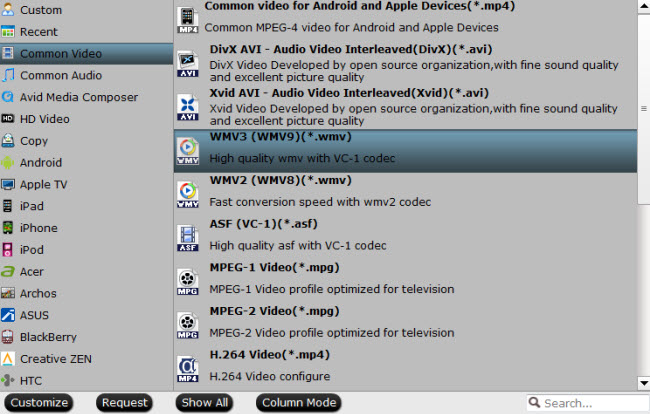Question 1: My windows media player wont play .MKV files. How can i get it to support this file type? – From answers.microsoft.com
Question: I use windows media center. I’ve just switched over to 64 bit windows and now MC is unable to play some formats: MKV, FLV and some more while it was playing everything in 32 bit. I’m confused. I’ve tried installing K-Lite Codec Pack Full but nothing is helping. What am i missing? – From sevenforums.com
Whether you are downloading videos from the Internet or if you get video files from other people, there is a high chance that you will come across MKV files. MKV files are not an audio or video compression format. In reality, MKV files are actually multimedia container formats. This essentially means that it is a container that can incorporate audio, video, and subtitles into a single file even if they use a different type of encoding.
Because it isn’t an industry standard, not all media Players support it yet, even though support is rapidly growing. Windows Media Player is one of them, and it will not play certain formats without third-party plug-ins. Make sure the video file you are trying to import is compatible with Media Player. Ideally the file should be in either WMV or AVI format.

Here I’ll share two ways for playing MKV files, using an MKV compatible media player VLC or converting MKV to Windows Media Player best supported format with a professional conversion tool.
Method One: Use VLC Media Player to play MKV files
Step 1: Begin by navigating to the official page at videolan.org (and beware of going anywhere else, because a lot of crapware vendors have fake VLC download sites.)
Step 2: Once you have downloaded the appropriate file simply run it to install VLC. The entire installation process should take no more than two to three minutes. The best part is that you don’t need to worry about bloatware coming with the program because it is a clean install, as long as you get it from the right place.
Step 3: To associate MKV files with VLC, you can right-click on one of them, click Properties, and then the Change button on the General page to switch out the default application. Find VLC media player in the list, and select it.

Step 4: Once you have set the file association, simply double-click on the file, and watch the video play with VLC media player. Note that this video in the screenshot is blurry because it is a low resolution video only meant to display the function of VLC.
VLC media player is indeed a good one for MKV files but it won’t play 3D videos as 3D. For higher requests, you can refer to the second way as follows.
Method One: Convert MKV to Windows Media Player best supported format with Pavtube Video Converter
Step 1: Go to pavtube.com, download, install and launch the MKV Video Converter and then click the “Add video” button to import your MKV files directly. In order to import several files at one time, you can click “Add from folder” button. For more convenient operation, you can drag and drop the MKV files to the main interface.

Step 2: Click the “Format” bar to get the drop-down menu and you can get “Common Video -> WMV3 (WMV9) (*.wmv)” as the best output format for playing in Windows Media Player.

Step 3: If the default A/V settings cannot fit your needs, you can click “Settings” button to custom the output video and audio settings by yourself. But if you are not good at it, you’d better use the default parameters, they will ensure you a good balance between file size and image quality basically.
Step 4: The built-in editing function provided by MKV Video Converter is something worth trying. To trim the video, add artistic effects, adjust audio, add watermark, customize video parameters and so on. You can get the work done splendidly. Of course, if you don’t think it’s a necessary to do, you can skip it and move onto the next step directly.
Step 5: Press the “Convert” button on the bottom-right corner of this MKV Video Converter to start doing video conversion. The larger the MKV files are, the more conversion time should be taken.
How to Import local video files to Windows Media Player?
Step 1. Open Windows Media Player by clicking on the Start menu and then clicking on the Windows Media Player icon.
Step 2. Click on the “Library” tab in Media Player. If you already have music or video in your library, you will see those files displayed here.
Step 3. With Media Player still open, click on the video file you would like to import to highlight it.
Step 4. Drag the video file over to the Library window in Media Player, and release the button. This will import the video into your Media Player library.
Step 5. Click on the “Library” tab at the top of Media Player, and select “Video.” Once your video library opens, verify that the video file has been added.
By adding the video file to your Media Player library, you can have ready access to it without having to search through your hard drive for the file.
Now, are you ready to enjoy your MKV movies in Windows Media Player? Go ahead and have fun!








Leave a Reply